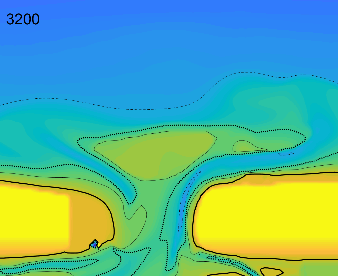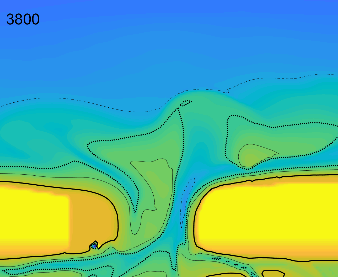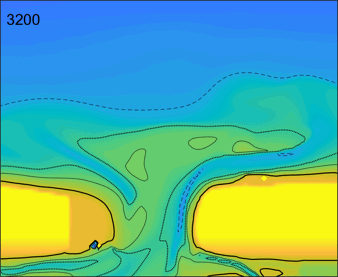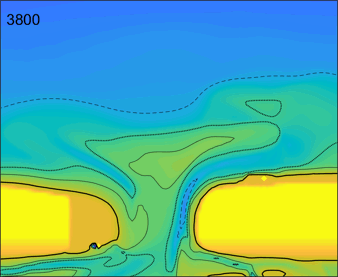K.J.H. Lenstra1, L. Fu1, M. van der Vegt1
1 Utrecht University, This email address is being protected from spambots. You need JavaScript enabled to view it.
Introduction
Sedimentation of the Dutch Wadden Sea during the last century was a direct result of human interventions, such as the construction of the Afsluitdijk and the closure of the Lauwerszee. Most of the sediment was supplied by the ebb-tidal deltas, which had a significant loss in sediment volume. Accelerated sea level rise will cause an additional need for sediment in the Dutch Wadden Sea, but it is unlikely that the remaining ebb-tidal deltas can deliver this. Therefore, mega nourishments (~20·106 m3) of ebb-tidal deltas are considered and in 2018 a nourishment of ~5·106 m3 has been implemented at the ebb-tidal delta of Ameland. However, the question is how ebb-tidal deltas will respond to these nourishments. For example, will the sediment indeed be transported into the tidal basin and does this depend on the location of the nourishment? Furthermore, many ebb-tidal deltas show a cyclic pattern of shoal formation, migration and attachment to the downdrift coast and it is highly uncertain how this cyclic evolution is affected by nourishments.
Methods
Here, we studied the long-term (>years) morphological effect of nourishments on cyclic channel-shoal dynamics. Using an idealized geometry and simplified forcing in Delft3D/SWAN, we implemented and studied the morphodynamic evolution of ebb-tidal deltas for a wide range of possible nourishments, varying in size, location and phase of the cyclic behavior. We compared our results with a base case model simulation without nourishment which showed clear patterns of channel-shoal dynamics resembling those observed in the Wadden Sea.
Results
Our results show that the nourishments accelerate the natural cyclic behavior, where different nourishment locations show different effects. Nourishing the updrift shoal reduces the period between successive shoal attachments by 30% (see figure 1), whereas this is only 15% if the nourishment is placed in one of the channels. Surprisingly, most of the nourished sand remained in the updrift side of ebb-tidal delta, even during the channel and shoal migration. This indicates that the nourished sediment causes morphological changes by adjusting the patterns of sediment transport rather than directly feeding the shoal that attaches to the downdrift island. As a result, the volume of the ebb-tidal delta is higher than in the base case model simulation, even after several shoal attachments. Furthermore, any nourishment initially results in additional sediment transport into the tidal basin. However, this effect is limited to the first cycle of the modeled channel-shoal dynamics.





Figure 1. Depth obtained in model simulation with (left) and without (right) nourishment at the updrift shoal at the moment of nourishment placement (3200 modeled days) and 600 days hereafter. It can be seen that the nourished ebb-tidal delta is close to shoal attachment and new channel has formed, whereas the base case is still in the preceding phase of channel rotation and shoal growth.










